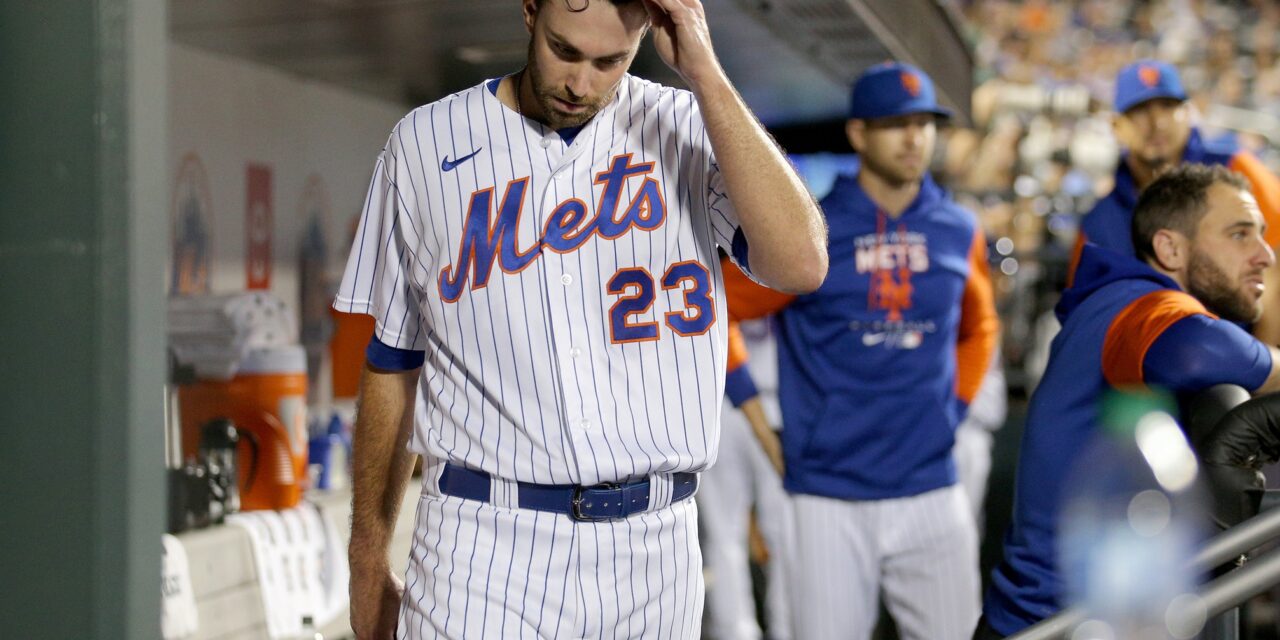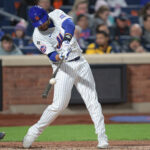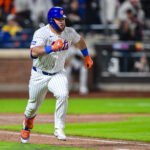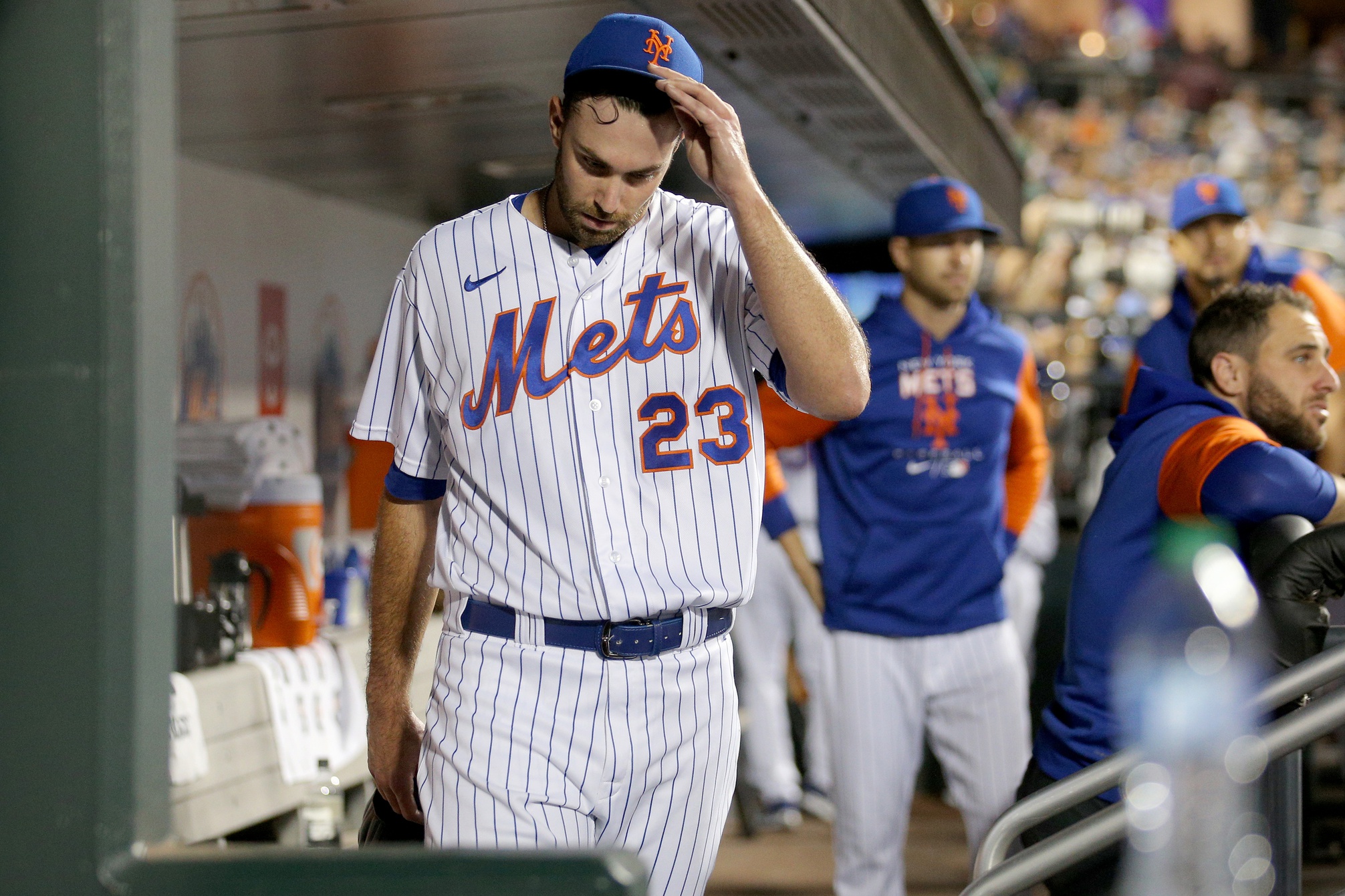
David Peterson. Brad Penner-USA TODAY Sports
Arguably, the biggest disappointment for the New York Mets through 22 games is starting pitcher David Peterson. The 27-year-old Oregon graduate excelled in spring training, resulting in him rightfully winning the last rotation spot to begin the season. However, he has looked nothing like that pitcher in spring that only allowed one hit over 12 innings of work. Of greater concern, he looks nothing like the pitcher of last year either.
Through five starts and 25 2/3 innings, Peterson has allowed 33 hits, 21 runs (7.36 ERA), and a staggering seven home runs (second-most in the majors). His underlying metrics paint just as ugly as a picture – 5.04 xERA and 5.62 FIP. Peterson’s start on Saturday exemplified these struggles even more as he allowed seven runs and seven hits across only five innings.
So, what has gone wrong so far? Other than his typical lackluster control/strike throwing at points, two main issues stick out. Those being struggles with allowing the home run ball and the fall from grace of his slider.
Firstly, as mentioned above, Peterson has allowed the second-most home runs in Major League Baseball this season. This 6.0 percent rate, of course not sustainable for the worst of pitchers, is 2.2 percent higher than the highest mark of his career and a staggering 2.8 percent worst than his career average. For comparison’s sake, the major-league average is 3.1 percent and his career average is 3.2 percent.
The most interesting aspect of all this is the average average exit velocity Peterson is allowing (64th percentile) as well as the hard-hit rate (50th percentile) are both down. These figures are currently the best marks he has posted since his first season in the big leagues. Additionally, Peterson is inducing less fly balls and more ground balls than he ever has before (1.00 ground ball to fly ball ratio, career mark is 0.94).
Given all this, there is strong reason to believe that his home run rate allowed should start spiraling downwards closer to his career marks. Especially if the velocity and ground ball trends continue.
The second part of his struggles is his slider efficiency. Last year, Peterson’s slider was not only his strongest pitch, but also one of the best pitches in the league.
In 2022, that aforementioned slider saw opponents hit a meager .175 off of it with an xBA of .173. This season though, the opposition is hitting a stagger .412 when Peterson throws the sweeper, with an xBA of .357. As a result, he has gone away from throwing it decreasing the rate he utilizes the pitch by five percent.
Interestingly, the pitch still has a very strong whiff rate (39.3 percent), but much less than the 47.9 percent rate it induced last year. Additionally, this was the pitch Peterson relied on heavily to put hitters away in 2022 (32.9 put away rate). This season, that rate has dropped by 8.5 percent.
The bottom line is that Peterson’s calling card – the slider – has regressed considerably. Finding a way to get it back to where it was during his successful 2022 season is imperative.
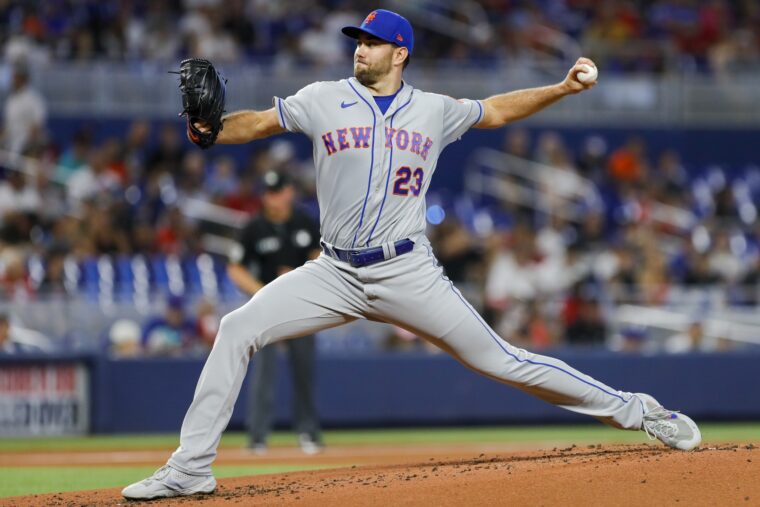
David Peterson. Sam Navarro-USA TODAY Sports
It has not been all bad for Peterson, even though it surely seems like it has. In addition to the exit velocity statistics, Peterson also ranks above the league’s 50th percentile in the following metrics: strikeout rate (63rd percentile), walk rate (57th percentile), whiff rate (73rd percentile), and chase rate (61st percentile). He is still striking opponents out via generating swing and misses as well as chases which is a great sign and something Peterson’s game was built upon last year.
To add to this, there are also signs – outside his likely regressing home run rate – that Peterson is due for improvement. His BABIP (batting average on balls in play) has sky rocketed this season to .371. That rate is much higher than the .316 league average and his .303 career average. One can expect that number to fall back down to earth, resulting in more outs. Further evidence of this likely happening is his xFIP of 3.42 indicating his 5.62 FIP is a very deceiving figure.
Basically, Peterson is due for much better luck when balls are put in play resulting in more outs and subsequently more success. Add in the fact Peterson does well striking batters out, you should see a much more efficient pitcher as the season rages on – whether it be at the major-league level or down in Triple-A.
Bottom line is that there is certainly an avenue for improvement as his underlying statistics and trends paint a picture of a pitcher who still has the stuff (outside the needed adjustment on the slider), but just is not getting the results yet.
All statistics courtesy of either Baseball Savant, Fangraphs, or Baseball Reference.


